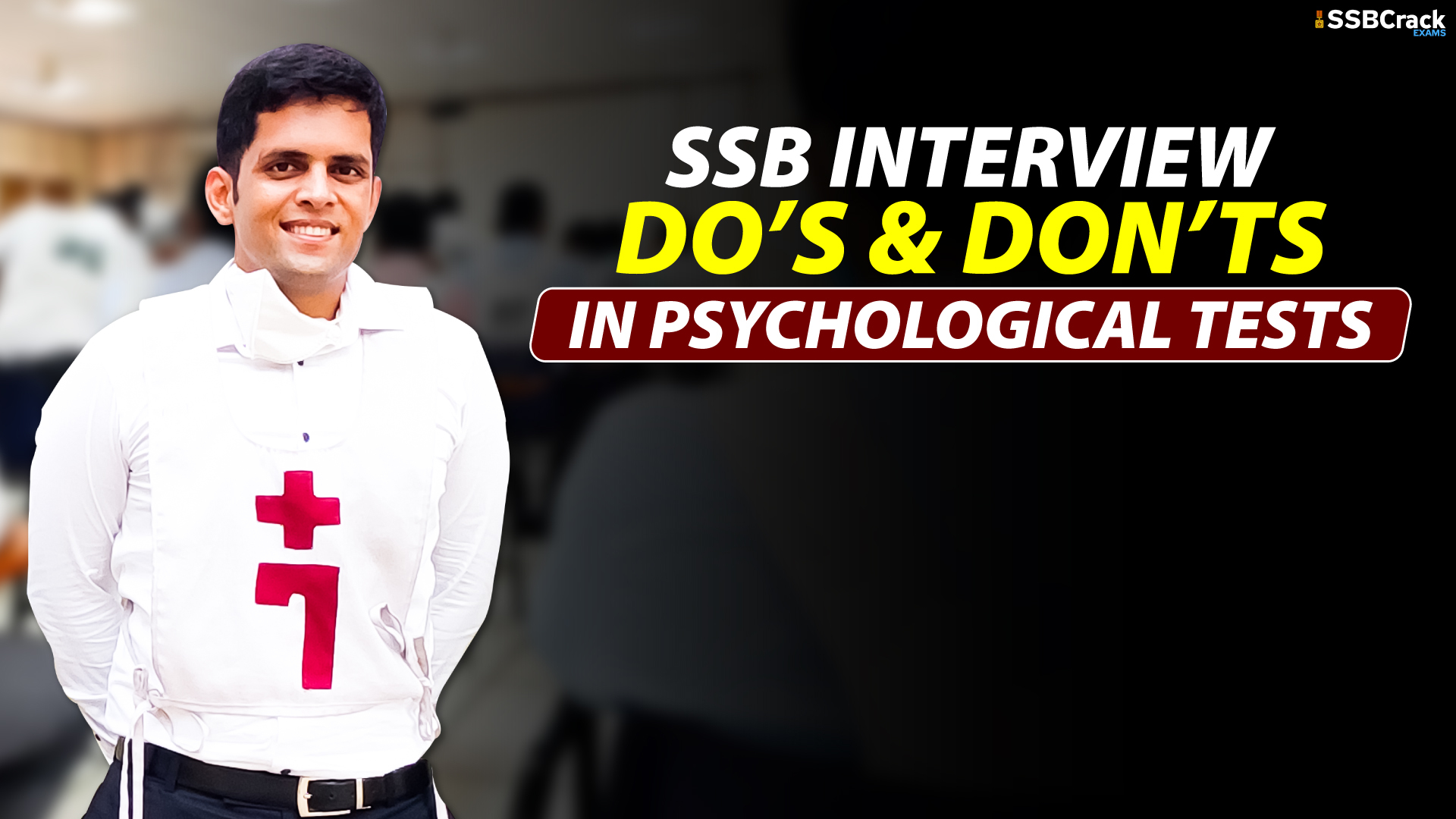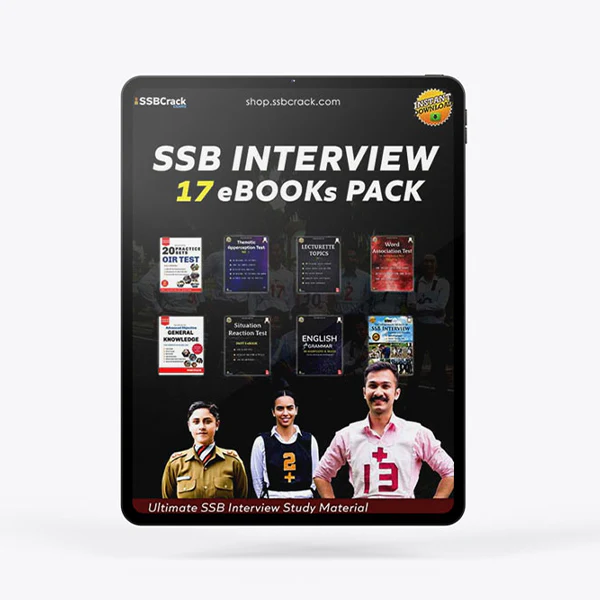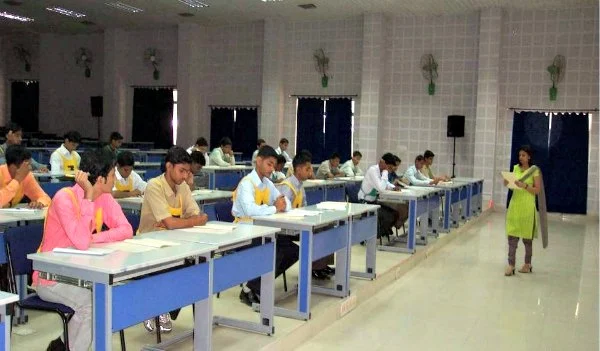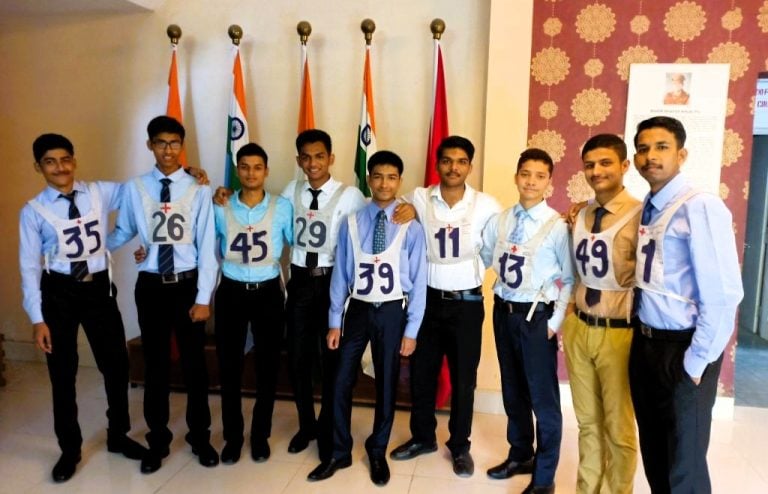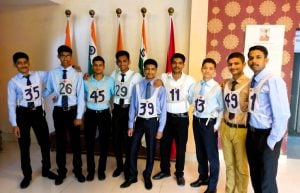The Services Selection Board (SSB) interview process is designed to identify candidates with the right psychological profile for military leadership roles. The psychological tests form a critical component of this assessment and often become the deciding factor for many aspirants. This article provides a detailed breakdown of the do’s and don’ts for each psychological test to help candidates approach these assessments with confidence and authenticity.
Understanding the Psychological Test Battery
The psychological assessment at SSB consists of several specialized tests, each designed to evaluate different aspects of a candidate’s personality:
- Picture Perception and Description Test (PPDT) – Assesses observation skills and imagination
- Thematic Apperception Test (TAT) – Evaluates emotional responses and creative thinking
- Word Association Test (WAT) – Measures spontaneous reactions and subconscious traits
- Situation Reaction Test (SRT) – Examines decision-making and response to challenges
- Self-Description Test (SDT) – Allows candidates to present their self-perception
General Guidelines for All Psychological Tests
Do’s:
- Follow instructions meticulously: Every test has specific parameters and time limits. Adhering to these is your first demonstration of discipline.
- Clarify doubts before starting: Once the test begins, questions aren’t typically entertained. Use the instruction phase to clarify any uncertainties.
- Be authentic and spontaneous: The psychological tests aim to understand your natural responses, not rehearsed ones. Authenticity is valued over perfection.
- Trust your first impression: Your initial reaction often reveals genuine personality traits. Overthinking can lead to artificial responses that contradict your natural tendencies.
- Write clearly and concisely: While time is limited, legibility matters. Assessors need to understand your responses to evaluate them properly.
- Stay relevant to the stimulus: Your responses should directly connect to the picture, word, or situation presented, demonstrating focus and relevance.
- Maintain logical consistency: Your stories and responses should be coherent and follow a logical progression, reflecting organized thinking.
- Manage your time effectively: Each test has strict time constraints. Distribute your time wisely across all questions or scenarios.
Don’ts:
- Avoid coached responses: Assessors are trained to identify memorized or tutored answers. They’re looking for individuality, not conformity.
- Control anxiety: Excessive nervousness can impair performance. Practice relaxation techniques before the tests.
- Don’t freeze when faced with challenging stimuli: Some pictures or scenarios might seem difficult to interpret. Approach them with creativity rather than hesitation.
- Avoid fixed mental templates: Entering with preconceived notions about what the pictures might show can limit your spontaneity and creative thinking.
- Don’t focus excessively on time-keeping: While time management is important, constantly checking the time can be distracting and counterproductive.
Test-Specific Guidelines
Picture Perception and Description Test (PPDT)
Do’s:
- Observe the picture thoroughly within the given time (usually 30 seconds)
- Develop a coherent story with a clear beginning, middle, and end
- Include emotional elements and motivations of characters
- Describe the physical setting and time frame clearly
- Conclude with a positive or constructive resolution
Don’ts:
- Don’t create overly complex or unrealistic narratives
- Avoid focusing only on physical descriptions without developing a story
- Don’t contradict your initial perception during group discussions
- Avoid excessive violence, illegal activities, or inappropriate themes
Thematic Apperception Test (TAT)
Do’s:
- Create dynamic stories showing character development
- Demonstrate problem-solving approaches through your characters
- Incorporate appropriate emotional responses
- Show leadership traits through character actions
- Handle blank slides with creativity (they test your ability to generate ideas from scratch)
Don’ts:
- Don’t write superficial stories lacking depth or meaning
- Avoid pessimistic or fatalistic endings
- Don’t create static descriptions rather than evolving narratives
- Avoid excessive focus on negative emotions or traumatic situations
Word Association Test (WAT)
Do’s:
- Respond quickly with the first appropriate word that comes to mind
- Maintain consistency in your responses throughout
- Keep responses relevant to the stimulus word
- Use positive or neutral associations where possible
Don’ts:
- Don’t overthink your responses
- Avoid using negative associations repeatedly
- Don’t leave responses blank if possible
- Avoid using the same response for multiple stimulus words
Situation Reaction Test (SRT)
Do’s:
- Read each situation carefully before responding
- Provide practical, implementable solutions
- Show decisiveness and moral courage
- Balance empathy with pragmatism
- Demonstrate resourcefulness and adaptability
Don’ts:
- Don’t propose extreme or unrealistic solutions
- Avoid indecisiveness or conditional responses
- Don’t show excessive aggression or passivity
- Avoid responses that violate ethical standards or regulations
Self-Description Test (SDT)
Do’s:
- Be honest about your strengths and weaknesses
- Provide specific examples to support your claims
- Show self-awareness and a growth mindset
- Structure your content logically (family background, education, achievements, qualities, hobbies, goals)
- Demonstrate how you’ve worked on your weaknesses
Don’ts:
- Don’t present an idealized version of yourself
- Avoid vague generalizations without supporting evidence
- Don’t contradict information provided in your PIQ (Personal Information Questionnaire)
- Avoid excessive boasting or self-criticism
Psychological Profile Being Assessed
Understanding what the SSB is looking for can help candidates present their authentic selves more effectively. The psychological tests aim to identify:
- Effective Intelligence: Practical problem-solving abilities rather than mere academic knowledge
- Social Adaptability: Ability to function effectively in various social contexts
- Leadership Potential: Capacity to influence and guide others constructively
- Moral Courage: Willingness to stand by principles even in difficult situations
- Emotional Stability: Ability to remain calm and functional under pressure
- Resilience: Capacity to recover from setbacks and persist despite challenges
- Initiative: Self-motivated action and proactive approach to problems
- Judgment: Sound decision-making based on available information
Preparation Strategies
- Practice with timed exercises: Familiarize yourself with the time constraints of each test
- Develop creative thinking: Read varied literature and engage in activities that stimulate imagination
- Enhance emotional intelligence: Practice recognizing and articulating emotions
- Improve vocabulary: A richer vocabulary will help express ideas more precisely
- Work on handwriting speed and clarity: Legibility matters when assessors are reviewing hundreds of responses
- Develop situational awareness: Practice analyzing social situations and their dynamics
Conclusion
Success in SSB psychological tests comes from a combination of preparation, authenticity, and presence of mind. While preparation is important, it should focus on developing your natural abilities rather than memorizing responses. The key is to present your genuine self while demonstrating the qualities valued in military leadership.
Remember that these tests are designed to identify your natural tendencies and potential, not to catch you out. Approach them with confidence, honesty, and a positive mindset. The right candidates will naturally display the qualities being sought, without needing to fabricate responses.
By understanding the purpose and methodology of each test, and by following the guidelines outlined above, you can maximize your chances of performing well in the psychological assessment phase of your SSB interview, bringing you one step closer to realizing your dream of serving in the armed forces.
Also Read:
